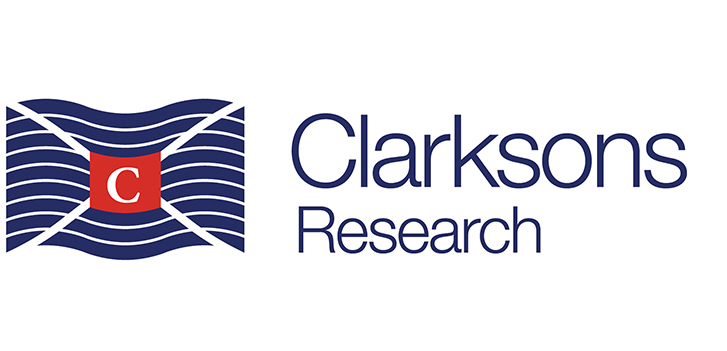
Full year 2021 statistics for the international shipping industry have been released by Clarksons Research, profiling the strongest year for average ship earnings since 2008 supported by trade volume recovery, widespread congestion and modest fleet growth. Steve Gordon, Managing Director of Clarksons Research commented:
Our cross-sector ClarkSea Index averaged $28,700/day in 2021, up 93% y-o-y to a 13-year high, and more than double the 10-year trend.
The container market led the way, with charter rates up 260% y-o-y to five times pre-Covid-19 levels and their highest levels on record amid a strong trade rebound and impacts from severe logistical disruption including port congestion. Container freight rates also surged ahead, up 200% y-o-y (nearly 5x pre-Covid levels), and have continued to hit new record levels into early 2022.
Dry bulk rates were up 185% y-o-y to their highest levels in over a decade, with the smaller sizes (helped by good growth in minor bulk & grains) performing particularly well (Supramaxes up 210%).
Good gains also seen for LNG (boosted by another winter ‘spike’, up 50% y-o-y), car carriers (+103%) and Ro-Ro (+20%).
Some improvements in rates and utilisation also seen in offshore oil & gas, where the outlook is now cautiously optimistic and our overall earnings index increased to its highest levels since 2015 by year end. Offshore renewables continues its growth and investment phase, with global offshore wind farm capacity increasing by over 50% and 18.5 GW in 2021 and 50.5 GW (driven by Chinese growth).
After benefitting from ‘floating storage’ in 2020, tanker earnings fell by 71% y-o-y, with particular ‘pain’ for VLCCs.
Global seaborne trade volumes estimated to have rebounded by 3.6% to reach 12.0bn tonnes in the full year, exceeding 2019 levels. Progress was uneven however: container, dry bulk and gas trade came back strongly to hit new records, while oil trade recovery has been modest so far, still c.8% below pre-Covid levels. Despite a risk “watch list” (e.g. Chinese “cooling” policies, inflation, tax increases, fiscal spending unwind) we are projecting trade will reach an encouraging 12.4bn tonnes in 2022.
Widespread disruption to global logistics and supply chains helped to ‘tighten’ shipping markets, particularly in the container, dry bulk and car carrier sectors. Our Container Congestion Index, for example, peaked at 37.5% of capacity in port, vs. 31% pre-Covid. Some form of normalisation will come eventually, but it may take time to ‘unwind’ fully.
Fleet growth remained moderate, with expansion of 2.9% in dwt (compared to 10-year average of 4.1%), and expected to remain moderate in 2022. Demolition (24.3m dwt) and shipbuilding output (86m dwt) were fairly steady year-on-year.
Newbuild order volumes rose to the highest level since 2014 (120m dwt, $107bn), though investment was skewed towards the container ($42bn) and gas ($21.6bn) segments. The orderbook remained relatively low in historic terms and edged up to a manageable 9.4% of the fleet in dwt (7.3% for tankers, 7.0% for bulkers and 23% for containerships). In total 34% of new orders (in GT) were alternative fuelled and shipping’s total CO2 footprint edged up to 2.4% of global emissions.
S&P transactions jumped to a record 145m dwt ($46bn), while asset prices - particularly in the boxship and bulkcarrier sectors - also rose. Newbuild prices were generally up by around a third over the year, slightly more so in the larger boxship sectors, while scrap prices rose by around 40%.
Source: Clarksons
The opinions expressed herein are the author's and not necessarily those of The Xinde Marine News.
Please Contact Us at:
media@xindemarine.com


 Ningbo Containerized Freight Index Weekly Commentar
Ningbo Containerized Freight Index Weekly Commentar  Ningbo Containerized Freight Index Weekly Commentar
Ningbo Containerized Freight Index Weekly Commentar  Ningbo Containerized Freight Index Weekly Commentar
Ningbo Containerized Freight Index Weekly Commentar  BIMCO Shipping Number of the Week: Bulker newbuildi
BIMCO Shipping Number of the Week: Bulker newbuildi  Ningbo Containerized Freight Index Weekly Commentar
Ningbo Containerized Freight Index Weekly Commentar  Ningbo Containerized Freight Index Weekly Commentar
Ningbo Containerized Freight Index Weekly Commentar